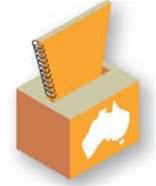OPINION: Australia's Department of Finance and Deregulation has written a thoughtful response to my critique of the AusTender site, with a few fixes already on the way.

We are more than pleased to see Government agencies so willing to engage on how processes might be improved.
"Your article has provided us with some food for thought about immediate and future actions, and we hope that you find the information useful," a Finance spokesperson wrote to iTnews.
The department's response suggests a few improvements may be on the way. Its take on my five gripes was as follows:
#5. Non-intuitive URL
This issue has been resolved. The department uses tenders.gov.au to maintain consistency with other jurisdictions' tendering websites, which is in agreement with all Australian jurisdictions. The department maintains that agreement by retaining the tenders.gov.au address; and has now also directed austender.gov.au to the AusTender site.
#4. No tutorials on driving AusTender
Tutorials on using AusTender is a little more difficult to action as quickly as number five. The department has looked into this however the cost of producing this is high and the priority has been geared to cater for the ongoing commitment to improve AusTender. As AusTender is a free service to stakeholders, there is a limited budget.
#3. Disorganised, odd navigation and terms of use
The department is committed to looking into these matters. Currently, the Navigation Panel options are organised according to functional use. The site provides links to a range of information which is categorised under Info and Links and Policy that comply with the Trade Agreement obligations and reflect public demand for access to supplementary information. The department will continue to liaise with stakeholders to see if the links can be made more intuitive.
The department will also continue to use the definitive source of department and agency addresses - directory.gov.au - for general contact information. AusTender provides a warning about tender lodgement on an intervening page before allowing access to the directory that informs potential suppliers to review tender documentation on lodgement requirements. The trade agreements obligate us to provide a "list of agency addresses".
With regard to terms of use, the department's policy aims to protect potential suppliers from confusion about tenders in the market. There is a risk that third party republication of tendering data and documentation, particularly where those organisations insert their websites into the time-critical tendering process. This can lead to misunderstandings, confusion and even suppliers failing to lodge tenders. Permission to republish and use AusTender data has not been unreasonably withheld in the past - rather a number of organisations have the capacity to download, analyse and report on AusTender information.
#2. Reporting of SME sales
The department contracts the Australian Bureau of Statistics to analyse SME participation. In simple terms, the data is derived by matching Australian Tax Office data with supplier ABN data in AusTender's contract records and applying an algorithm to remove subsidiaries of large companies that could, on face value, meet the definition of an SME. Under this arrangement, individual SMEs are not able to be identified (and therefore the data can't be back-loaded into AusTender). Although real time information on the SME share of the Australian Government procurement market may be of interest, it is not on the department's list of developments at this time.
#1. Disposing of tender specifications 30 days after a contract is announced
The core issue of this point is one of ownership. The prevailing view is that once the publication period closes, the documentation reverts to the ownership of the tendering agency. The department will consult with other departments and agencies to gain their views on your proposal.




.png&h=140&w=231&c=1&s=0)





 iTnews Executive Retreat - Security Leaders Edition
iTnews Executive Retreat - Security Leaders Edition












_(1).jpg&h=140&w=231&c=1&s=0)



